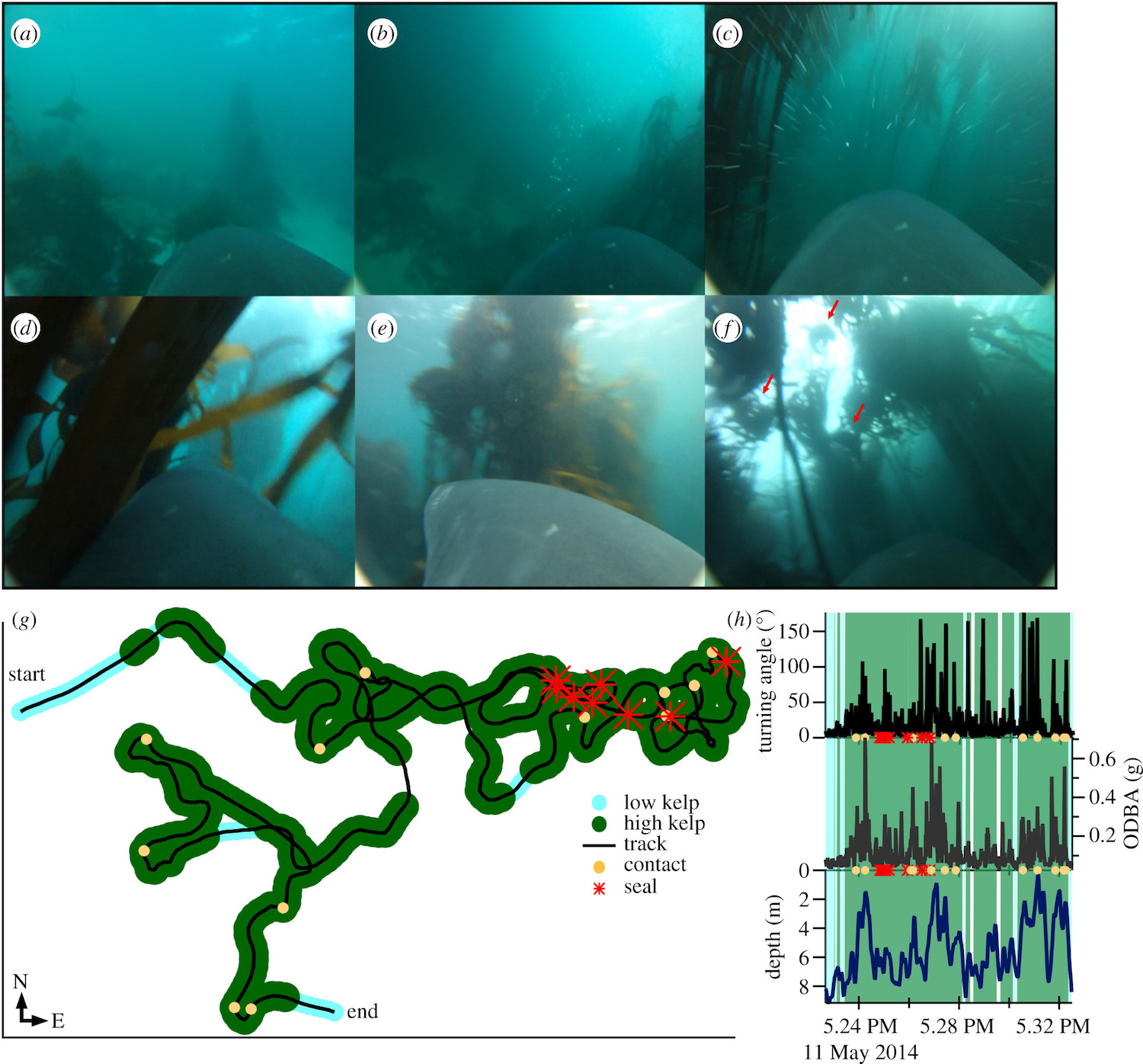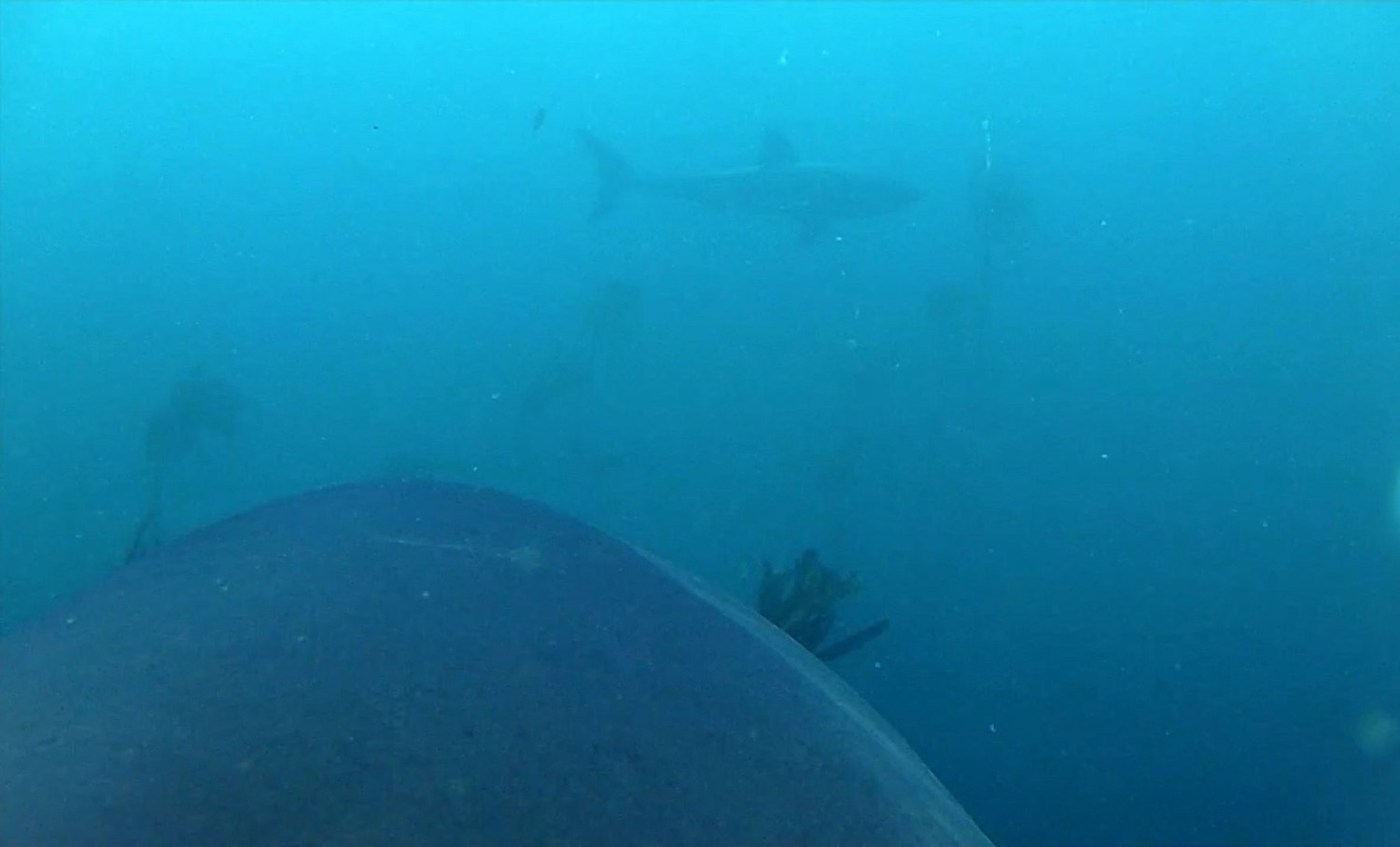Shark's-Eye-View Video Captures Epic Seal Chase Through Kelp Forest
Stunning new video footage shows great white sharks hunting seals — all from the huge predator's perspective. The sharks were fitted with video cameras that recorded some surprising behaviors.
The footage revealed that some great white sharks (Carcharodon carcharias) spent part of their days swimming through kelp forests, where cape fur seals (Arctocephalus pusillus) hung out. This finding, scientists say, is unexpected on two fronts.
For starters, previous studies showed that great whites usually hunt along the edges of kelp forests at dusk and dawn, when the sun isn't too bright, so the predators can ambush seals arriving and leaving the refuge. So, it's unusual that these sharks hunted in the kelp forest during daylight hours, the researchers said. And second, it was previously assumed that kelp forests were inaccessible to these large predators, the researchers wrote in the study. [In Photos: Great White Sharks Attack]
The scientists did the experiment near a cape fur seal colony on Geyser Rock in the Dyer Island Marine Reserve off the coast of South Africa in May 2014. They lured the eight great whites with fish chum and then attached video cameras to the sharks' backs. After recording an average of 28 hours of daytime footage per shark, the cameras detached from the animals, allowing the researchers to collect and review the recordings.
None of the footage showed the sharks successfully killing a seal (which was disappointing to the researchers, and likely the sharks too). But footage from one shark showed 10 interactions with seals. These furry mammals swam around in groups of one to three individuals and "responded to the presence of the shark by blowing bubbles, swimming deeper into kelp or hunkering to the seafloor," the researchers wrote in the study.
Even though the sharks didn't catch any seals, kelp forests may still be useful hunting grounds for sharks, the researchers said. Much more footage is needed before scientists can say either way. Moreover, the scientists said they were impressed with the sharks' agility in the kelp forests.
The study is the first of its kind to show that great white sharks regularly swim through kelp forests in search of prey. It was published online yesterday (April 3) in the journal Biology Letters.
Get the world’s most fascinating discoveries delivered straight to your inbox.
- In Photos: Great White Shark Washes Up on Santa Cruz Beach
- Images: Sharks and Whales from Above
- In Photos: Glow-in-the-Dark Sharks
Originally published on Live Science.

Laura is the managing editor at Live Science. She also runs the archaeology section and the Life's Little Mysteries series. Her work has appeared in The New York Times, Scholastic, Popular Science and Spectrum, a site on autism research. She has won multiple awards from the Society of Professional Journalists and the Washington Newspaper Publishers Association for her reporting at a weekly newspaper near Seattle. Laura holds a bachelor's degree in English literature and psychology from Washington University in St. Louis and a master's degree in science writing from NYU.




